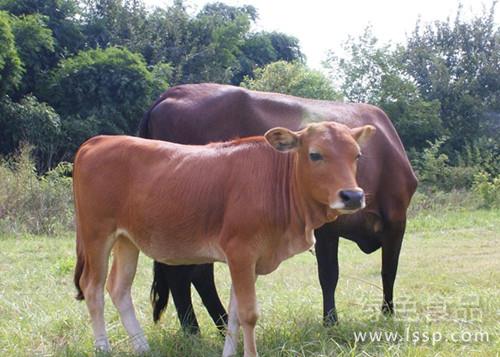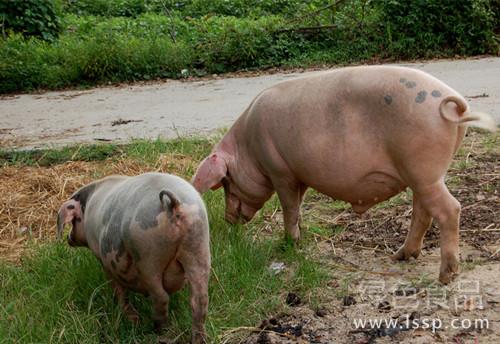The right prescription is effective in the prevention and treatment of bovine diarrhea and its prevention and treatment.
Diarrhea is one of the common and frequently-occurring diseases of boves. according to analysis, there are many causes of bovine diarrhea and different clinical symptoms. in cattle production, farms (households) should effectively prevent bovine diarrhea and diarrhea. In order to achieve good results, corresponding prevention and control measures must be taken according to the types and symptoms of bovine diarrhea. In this paper, the common types of diarrhea in cattle and their prevention and treatment are introduced as follows:

Cattle
Bovine fungal diarrhea:
The main results are as follows: 1. etiology: diarrhea caused by mildew gastroenteritis caused by mildewed and deteriorated forage. Affected cattle are generally manifested as mental exhaustion, loss of appetite, reduced ruminant, persistent diarrhea, and loose stool and stench and often mixed with foam, mucus and blood, but the body temperature of affected cattle does not rise, and there is no effect in the treatment of antibiotics.
2. prevention and control methods: the forage of cattle should be changed in time, and it is strictly forbidden to feed cattle with moldy and deteriorated forage. For cattle with fungal diarrhea, 0.9% saline 2500 ml ~ 4000 ml can be given orally for 2 ~ 3 times a day, and fresh green succulent feed is provided to cattle at the same time. Severely affected cattle should be treated with intravenous injection of 1000 ml ~ 3000 ml of 5% glucose and sodium chloride injection and vitamin C2 ~ 4 g, which can be cured in 2 ~ 3 days.
Bovine rumen acid toxic diarrhea diarrhea
1. Etiology: diarrhea caused by rumen acidosis in cattle caused by excessive acid silage, distiller's grains and excessive concentrate intake at one time. The suffering cattle are generally characterized by depression, reddish conjunctiva, loss of appetite or even abandonment, dull eyes, stumbling gait, hind limbs kicking in the abdomen; severe cases can not afford to lie on the ground, molars groan, muscle trembling, showing a coma collapse state. At the beginning of the disease, steak gray thin feces, and then turn to green foam diarrhea, if not timely treatment will eventually lead to cattle hematochezia and death.
2. Prevention and control methods: the forage fed to cattle should be fresh and diversified as far as possible, silage and distiller's grains that have been stored for too long should not be fed too much at one time, concentrate should be fed step by step, and excessive feeding at one time should be avoided. Beware of rumen acid toxic diarrhea in cattle. For cattle with rumen acid toxic diarrhea, lime 50g ~ 100g, water 1000 ml ~ 1500 ml, fully stirring and settling for 5 ~ 10 minutes, the supernatant was given to the affected cattle 3 times a day for 2 ~ 3 days, and for severe cattle, 200ml ~ 500ml calcium gluconate injection should be injected intravenously.
Diarrhea caused by unclean bovine herbs:
1. Etiology: diarrhea caused by bacterial gastroenteritis in cattle due to eating unclean forage and drinking unclean drinking water. Affected cattle are generally characterized by mental depression, elevated body temperature, reduced appetite, ruminating and even abstinence, showing persistent diarrhea. At the beginning of the disease, the steak is like a spray, but in the later stage, the defecation is weak, and the thin feces are mixed with foam, mucus and blood.
2. Prevention and control methods: the forage and drinking water fed to the cattle should be kept clean and clean, and the unclean diarrhea caused by the unclean forage and drinking water should not be avoided. For the cattle with unclean diarrhea, 60 grams of garlic can be used, mashed, and given to the cattle with appropriate amount of water 3 times a day, while the seriously affected cattle should be injected intramuscularly according to 5 mg ~ 10 mg of chloramphenicol per kilogram of body weight. At the same time, take sulfadiazine (the first dose is 0.2 grams per kilogram body weight, the maintenance dose is 0.1 grams), twice a day.
Cattle greedy for green diarrhea:
1. Etiology: after the beginning of spring, cattle eat too much budding young grass or green material at one time in the first few days of grazing, resulting in diarrhea caused by gastrointestinal dysfunction. The suffering cattle are generally characterized by good spirit, appetite, normal body temperature, only rarefaction, and thin turquoise feces.
2. Prevention and control methods: in the first few days of grazing cattle after the beginning of spring, cattle should be fed coarse feed (silage corn, ammoniated straw, peanut seedlings, sweet potato seedlings, etc.), and then graze after half-full. After a transition of 15 days to 20 days, the gastrointestinal function of the cattle gradually adapted to digest the grass, and then transferred to normal grazing throughout the day to strictly prevent the cattle from greedy and diarrhea. For mildly sick cattle only need to strengthen conditioning, feed cattle with appropriate amount of hay or straw, control the intake of young grass and green feed, cattle diarrhea disease can be recovered; for serious diarrhea disease cattle can take ginger 50g ~ 75g, mash and stir-fry, add liquor 50ml ~ 100ml, give cattle oral administration, 3 times a day, continuous oral administration for 2 ~ 3 days.
Farm cattle
Diarrhea due to traumatic diarrhea in farm cattle
The main results are as follows: 1. The etiology: because the cattle suffer from chronic digestive tract diseases, coupled with poor feeding and management, farmers continue to increase the weight-bearing time of cattle due to tight farm work, resulting in injuries to the muscles, bones and viscera of cattle, resulting in labor diarrhea. Affected cattle generally show mental fatigue, lying on the ground all day, loss of appetite or loss of appetite, showing long-term persistent diarrhea, and thin stool mixed with foam, mucus and blood, but the body temperature of the affected cattle generally does not increase.
2. Methods of prevention and treatment: on the premise of timely treatment of chronic digestive tract diseases of cattle, strengthening the feeding and conditioning of cattle, and reducing the labor load of cattle, it is advisable to take 50 g ~ 75 g of sappan wood, after the temperature of boiling water, add 50 g ~ 75 g of chopped fresh iron leaves and give them to the cattle 3 times a day for 3 ~ 5 days. For cattle with severe diarrhea, 5% glucose and sodium chloride injection 1000 ml ~ 3000 ml and vitamin C2 g ~ 4 g should be injected intravenously, which can be cured in 5 ~ 7 days.
Related
- On the eggshell is a badge full of pride. British Poultry Egg Market and Consumer observation
- British study: 72% of Britons are willing to buy native eggs raised by insects
- Guidelines for friendly egg production revised the increase of space in chicken sheds can not be forced to change feathers and lay eggs.
- Risk of delay in customs clearance Australia suspends lobster exports to China
- Pig semen-the Vector of virus Transmission (4)
- Pig semen-the Vector of virus Transmission (3)
- Five common causes of difficult control of classical swine fever in clinic and their countermeasures
- Foot-and-mouth disease is the most effective way to prevent it!
- PED is the number one killer of piglets and has to be guarded against in autumn and winter.
- What is "yellow fat pig"? Have you ever heard the pig collector talk about "yellow fat pig"?



